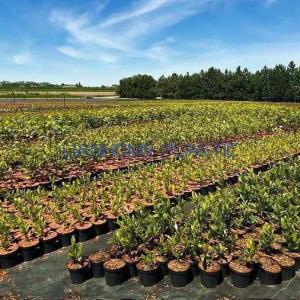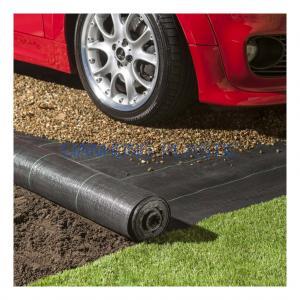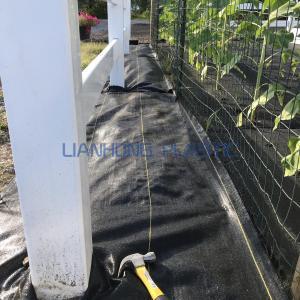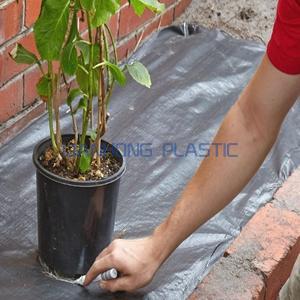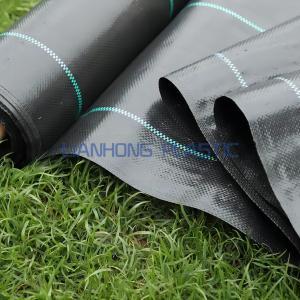What to Consider When Choosing the Best Weed Barrier?
Weed Barriers are one of the most popular methods for preventing weeds without the use of chemicals. They’re a cost-effective way to keep weeds at bay, helping to improve the look of your garden and, in vegetable gardens, even leading to a better yield by reducing competition in your soil. A good pick will be effective and durable and made to reduce weeds for several years. When shopping for the best Weed Barrier for your garden, consider the barrier’s material, durability, size, and eco-friendliness.
Material
Weed barriers come in woven and non-woven materials. Most weed barriers are made from polypropylene or polyester.


· NonWoven Weed Barriers are a less-permeable option, excellent for long-term weed control. Since they aren’t naturally breathable or penetrable, they are less popular for garden and flower beds. Instead, they are best for areas you don’t want any plants to grow, like pathways or in rock or gravel landscaping. Polypropylene and polyester are the most common materials for nonwoven barriers.
· As their name suggests, woven barriers are made from woven fabric or other materials to create a mesh-like weave. Woven Weed Barriers block sunlight, preventing weed growth. But unlike nonwoven options, they have tiny spaces that allow air and water to penetrate the soil for plant growth, making them ideal for garden beds. Perforated weed barriers perform similarly to woven barriers, but instead of a weave, they have small pinprick holes that allow water and air through. Polypropylene and burlap are the most common materials used for woven barriers.
Durability and Lifespan
A quality weed barrier should last a minimum of 5 years and up to 20 years or more. The best weed barrier options are treated to last through wear and tear as well as through rainy and sunny conditions. This ensures that they don’t tear easily underfoot and won’t break down after a season of rainy weather or exposure to direct sunlight.

Weed barriers come in various materials and thickness levels, both of which contribute to their durability and lifespan. The thicker and more durable the material, the longer the barrier should last. For example, woven materials like woven polypropylene, burlap, and linen tend to break down faster than thick, nonwoven polypropylene, which can take decades to break down.
Be sure to consider the appropriate thickness for the job. For example, a thick barrier is a durable pick under a gravel pathway, but the same barrier may be too thick for a vegetable or flower garden. For the latter situation, a thinner, more permeable weed barrier may be a better pick, even if it is less durable.
Size of Roll
Most weed barriers come in convenient rolls that are easy to transport and use. A weed barrier roll should display the fabric size, which you can use to calculate how much ground a roll can cover. Make sure to account for roughly an 8-inch overlap for areas that require several pieces of weed barrier fabric.

Weed barrier rolls are typically 3 to 6 feet wide and can range from 50 to upward of 200 feet long. For large coverage areas, consider a wider roll to cover areas faster.
When comparing similar-sized barriers, a thicker and heavier roll tends to mean thicker and longer-lasting fabric. As is the case with most home products, professional-grade products tend to be costlier, but they can have added benefits like more durable materials or better UV resistance.
Eco-Friendly
The most common weed barriers you can buy at the store are made from materials like polypropylene and polyester, which are not particularly eco-friendly. Barriers made from natural fibers like burlap or linen can be a more eco-friendly option since they break down faster than plastics. Regardless of the material, by choosing a durable option, using the barrier for as long as possible, and disposing of it correctly, you can reduce your ecological footprint.
For the most eco-friendly option, consider natural barriers like mulch, straw, peat moss, or other organic materials. Using natural barriers requires more work, but since these materials are biodegradable, they are the most environmentally conscious option.
UV Resistant
UV light is the enemy of any outdoor fabric and will eventually cause all exposed weed barriers to degrade. There are several qualities that can help a weed barrier resist UV damage.

While some high-quality weed barriers are not advertised as UV resistant, they are still made from durable materials that can last 5 years or more in a garden. To improve UV durability, consider covering the weed barrier with mulch, gravel, rocks, or other organic coverings. This decreases the barrier’s exposure to UV rays and can help it last longer.
When it comes to UV resistance, there are two options. Some materials are innately resistant to UV and are usually labeled as UV resistant. Others are UV stabilized, which means they are treated with a UV barrier to better withstand UV degradation.
